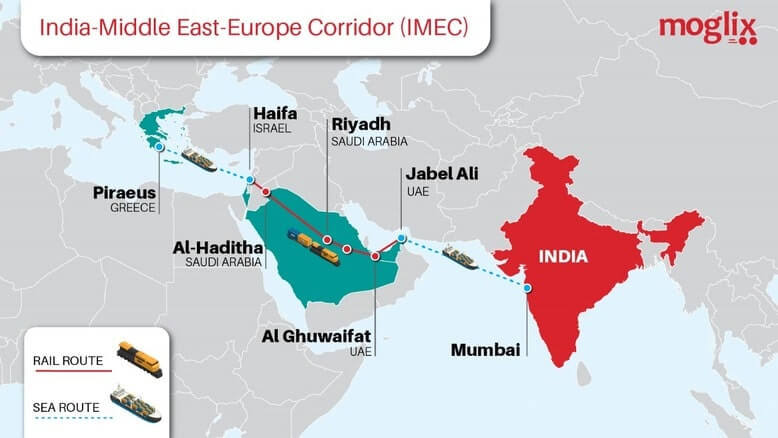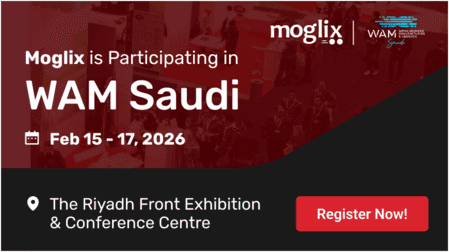The India-Middle East-Europe Economic Corridor – All you should know about

In a significant development during the recently concluded G20 summit held in New Delhi, India, a groundbreaking initiative was unveiled, with far-reaching implications for geopolitics and global connectivity. The United States, India, Saudi Arabia, the United Arab Emirates, along with France, Germany, Italy, and the European Union, jointly introduced the India-Middle East-Europe Corridor (IMEC). This ambitious project aims to foster economic development by enhancing connectivity and integration between Asia, the Arabian Gulf, and Europe. While it carries profound implications for global trade and politics, the IMEC also represents a dynamic shift in regional alliances and aspirations.
The IMEC at a Glance
The India-Middle East-Europe Corridor is a multimode transit corridor spanning over 3,000 miles, consisting of two primary corridors. The eastern corridor connects India to the Arabian Gulf, while the northern corridor links the Arabian Gulf to Europe. This extensive project, as outlined in the White House’s memorandum of understanding, will establish a reliable and cost-effective cross-border ship-to-rail transit network. It is designed to complement existing maritime and road transport routes, facilitating the seamless movement of goods and services between India, the UAE, Saudi Arabia, Jordan, Israel, and Europe. It is not limited to rail and shipping routes; rather, it includes an electricity cable, a hydrogen pipeline, and a high-speed data cable. This diverse range of infrastructure projects is poised to enhance trade and energy flows among the participating countries.
A Counter to China’s Belt and Road Initiative
China’s Belt and Road Initiative (BRI) has been a prominent player in global infrastructure development over the past decade. However, recent data suggests a stagnation in the value of new foreign contracted projects under the BRI since its peak in 2019, coinciding with China’s domestic real estate debt crisis. This economic challenge has raised questions about the sustainability of China’s expansive infrastructure program.
One of the most noteworthy aspects of the IMEC’s unveiling was the swift positioning of the corridor as an alternative to China’s Belt and Road Initiative (BRI). The BRI has significantly expanded China’s influence by developing trade and infrastructure networks across Asia, Europe, and Africa. However, the IMEC is not simply a rival to the BRI; it represents a different approach to regional cooperation.
Saudi Arabia and the UAE, central players in the IMEC, have shown reluctance to engage in a bipolar world order that forces them to choose between China and the United States. Their active participation in both the IMEC and their recent admission to the BRICS group of major emerging economies underscores their commitment to maintaining autonomy and safeguarding their sovereignty.
Deepening Integration and Economic Convergence
The IMEC underscores the deepening integration between India, Saudi Arabia, and the UAE, signifying broader geopolitical and economic convergence between the Middle East and South Asia into West Asia. India has become Saudi Arabia’s second-largest trading partner, with bilateral trade reaching $52.75 billion during 2022-23, elevating Saudi Arabia to India’s fourth-largest trading partner. Similarly, trade between India and the UAE surged to $85 billion in 2022, positioning the UAE as India’s third-largest trading partner for the year 2022-23 and its second-largest export destination.
This shift in regional dynamics also reflects the evolving state of Pakistan-Gulf relations, where Saudi Arabia and the UAE have adjusted their economic and geopolitical posture toward India. This shift acknowledges India’s rising influence and signifies the aspirations of Gulf nations in the emerging multipolar world. In this changing landscape, traditional alliances are being reevaluated to align with geopolitical realities and economic opportunities.
Beyond Energy: Diversification and Autonomy
The IMEC signifies that Gulf states, particularly Saudi Arabia and the UAE, are actively seeking diverse economic and technological partnerships beyond their role as energy producers. While energy remains a core pillar of their economies, the IMEC highlights that they are determined to establish more diversified and resilient economies.
For years, Washington has primarily approached Gulf states with an energy-centric perspective. However, the IMEC signals a shift towards recognizing that bilateral relations with Saudi Arabia and the UAE are multidimensional. Energy is a significant component, but it is not the sole focus. The United States aims to change the trajectory in the Gulf by involving India in both geopolitical and economic aspects.
Way forward
The India-Middle East-Europe Economic Corridor is not merely an infrastructure project; it is a geopolitical game-changer. It signifies the evolving landscape of alliances, the quest for autonomy, and the recognition that the Gulf states are integral players in the global economy. As the project unfolds, it has the potential to reshape the future of connectivity, trade, and geopolitical influence in the Middle East, Asia, and Europe. The IMEC is a declaration that global partnerships can transcend traditional boundaries and create a more interconnected and prosperous world.

